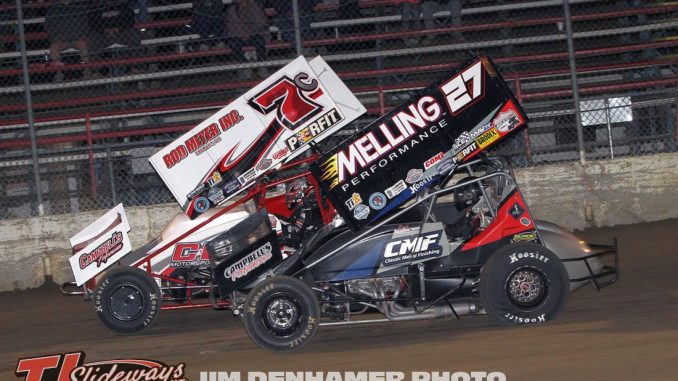
By T.J. Buffenbarger
(April 19, 2022) — With the news last week of GLSS taking over the National Racing Alliance in 2023, bringing that division under one umbrella here are a few takeaways from that announcement.
• The announcement that Great Lakes Super Sprints and National Racing Alliance would merge with Barry Marlow at the helm of both series is good news for the 360 sprint car division in the area. After working well together for many years a rift between the two groups developed the past several seasons that was starting to negatively impact the division. Instead of heading down the same path winged pavement sprint car racing traveled, Marlow and NRA owner Ron Hammons made amends in what will hopefully become a direction for the series.
Tentative plans are to have a North and South series along with a touring group that will chase races in both regions. If schedules work out as planned the series should work out where we see different north, south, and traveling champions crowned.
It is an ambitious plan, but so far Marlow has managed to grow his trio of series beyond my expectations. I don’t see anything in the short term that would keep this from happening in Ohio.
• The biggest challenge I see ahead for the combined GLSS series is cultivating new talent for the southern portion of the series in Ohio. In Michigan GLSS holds the top position in the sprint car ecosystem as the premier touring series in the state. GLSS also owns the Great Lakes Traditional Sprints, which means Butler Motor Speedway’s weekly 410 sprint car program is the only entity not under his control that races on dirt.
Ohio has a much more diverse and plentiful sprint car scene with teams having more options on where to race on a variety of platforms. The biggest thing GLSS can try to create is the same pit side atmosphere where drivers want to run the events. Over Marlow’s tenure with GLSS the biggest change I’ve seen is the culture in the pits where teams seem to have a stronger desire to come out and compete, even at tracks they may not enjoy racing at. If that same culture can be cultivated on the Ohio side, I believe there is a segment of the racers in that region that would find that appealing.
• Unfortunately, this merger came together too late to implement what seems to be a solid plant for the future for both regions. The plan potentially being two regional series and a touring series between the two should give teams that don’t want to travel as much ample opportunity to chance their own championship with some of the more assertive teams taking on the traveling portion of the tour.
This could help growth in the division and allow some of the teams with fewer resources or obligations. If the plan goes through that I discussed with Marlow last week it should benefit everyone involved, giving teams a variety of goals to chase for 2023.
• Bonus Takeaway: While Marlow is taking things over next year and deserves credit in this, do not forget to give Ron Hammons his due. Over the past 20+ years I’ve known Hammons as a sponsor, car owner, promoter, and series owner. I’ve felt Hammons has done well in all these roles, often going above and beyond to help. Hammons has done a lot of work behind the scenes to keep the 360 sprint car division relevant in Ohio during some tough times. Like many people that volunteer their time organizing the sport, Hammons will likely be appreciated more after he’s gone than while at the helm.
